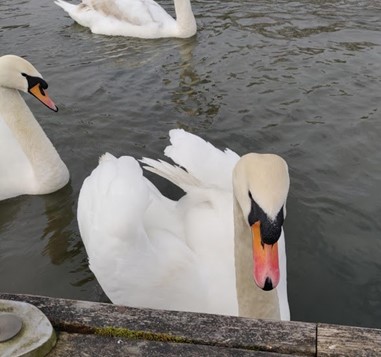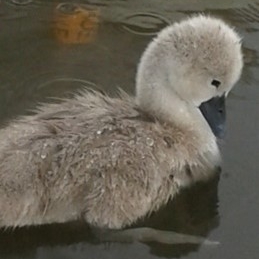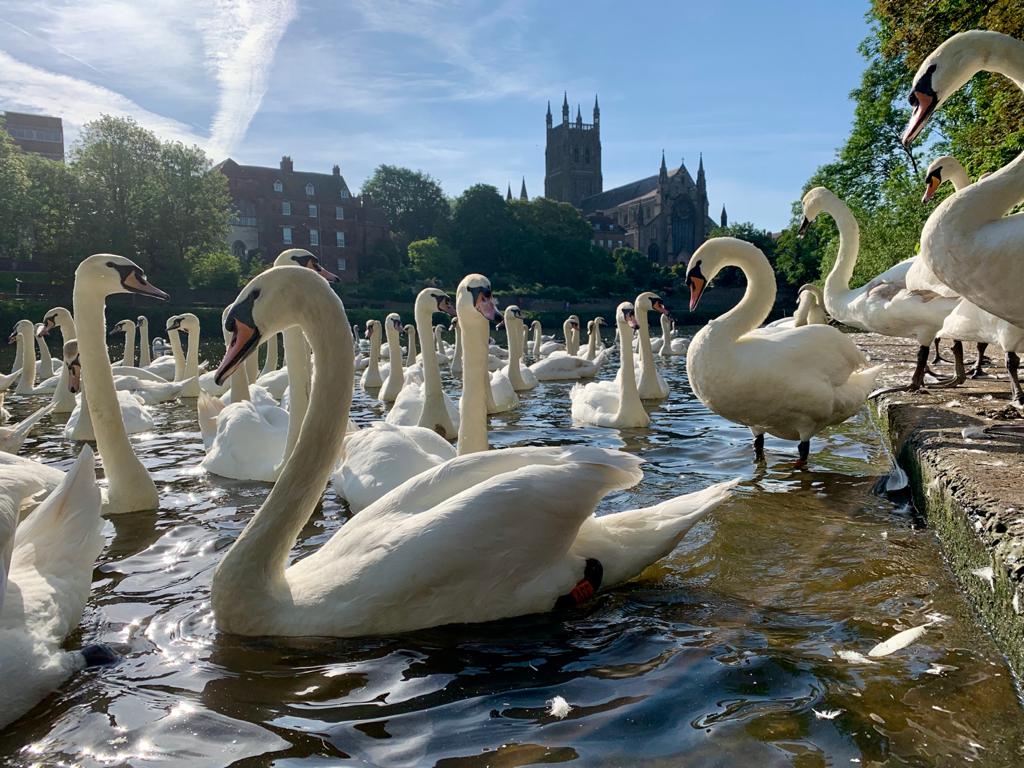Mute Swans (Cygnus Olor)

Swans in Worcester are Mute Swans. They’re the most common swan seen on urban water in the UK and Europe.
They are completely white as adults, though their heads may become stained a ‘rusty’ colour when they feed in iron-rich waters. Adults’ beaks are orange/red with a black serrated edge, tip (nail), and nostrils. Their caruncle (better known as a ‘knob’ or ‘berry’), feet and legs are also black.
The cob (males) tends to be larger and heavier than the pen (female), with a longer neck and a longer, flatter head. The berry gets larger with age, and as the breeding season approaches, in both male and female swans. The larger berry in a pair does not necessarily denote the male – an older female with a young partner may have the larger berry.
Swans have more than 20,000 feathers, many being tiny. They spend a great deal of time each day preening to keep them waterproof and in good condition.
Cygnets start off with black beaks, which turn grey and then pinkish, before becoming orange as adults. They have grey down when they hatch. Their first feathers are brown. White feathers then begin to emerge, until the cygnets are almost white by the end of their first year.
Beak colour evolves from black at hatching to pinkish at the end of the first year




